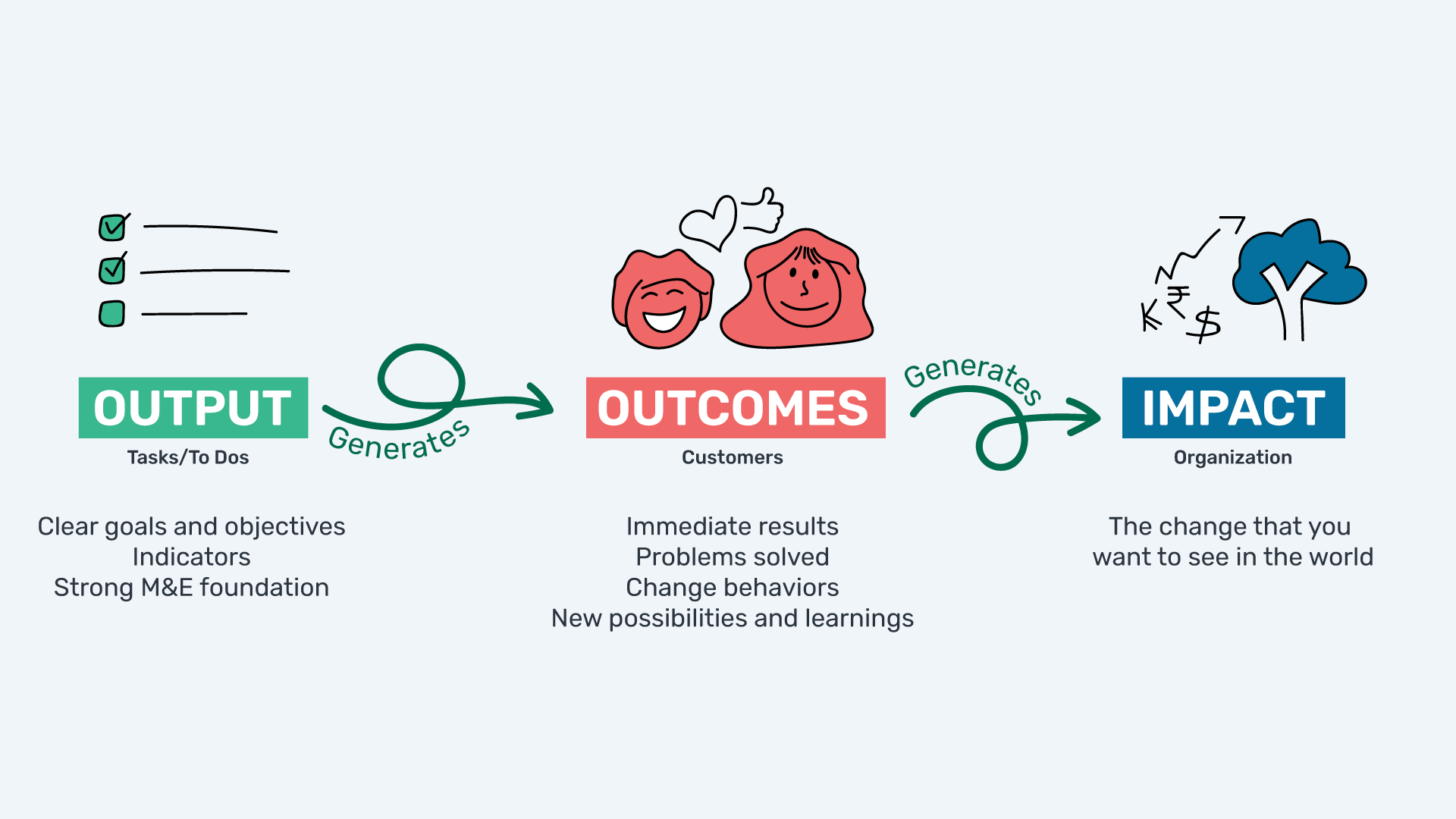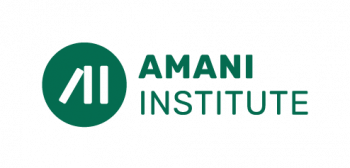Adriana Casulari, Global Operations, Monitoring and Evaluations Manager
Individuals and organizations who lead social impact tackle some of the most profound global problems. This can be overwhelming, especially when you are in the early stages of starting an enterprise. But addressing one problem can lead us to see even more issues, leaving us trying to fix it all. We are often tempted to think the right approach is to solve all problems at once, such as building world peace or ending global hunger. However, it is more effective to focus on one aspect at a time that is plausible, clear, and achievable.
But how do we pick the right place to start? And how do we know we are solving problems for the future? There is a simple answer: Monitoring and Evaluation (M&E). We’ve outlined four steps to approaching our Monitoring and Evaluation at Amani Institute, with an example showcasing how you can set yourselves up for Monitoring and Evaluation success!
STEP ONE: START WITH UNDERSTANDING YOUR IMPACT
First, let’s understand how the impact differs from your processes’ outputs and outcomes. Outputs are indicators that serve as thermometers for whether your processes are going in the right direction. The impact is the actual change you want your venture to provoke. The outcome is the immediate results you’ll collect every time you implement your project, educational program, service delivery, or whatever pathway you design to achieve your impact.
Imagine that you’re cooking a curry. You probably have a recipe to follow and an idea of what it should taste like in the end. When you start cooking your curry, you monitor the process, and your indicators can be: the temperature of the pan, the measures of spices, the quality of the vegetables, the texture of the sauce, and so on. These are your outputs. By getting them right, most likely, you’ll see the desired outcome: a delicious curry. What about the impact?
Let’s say the actual problem in question is the increase in unemployment in your community, and you designed a program to teach a group about cooking and selling curry as a source of income. Your impact would be how much their lives changed because of the program.
Identifying the problem, delimitating your impact, and the pathway to get there are certainly not easy. The theory of change has been largely used to design the cause and effect you want for the organization. It helps you plan and shape the change you want to provoke, outlining the sequence of actions to get there. One of the simplest and most helpful ways to understand the theory of change is by using if…then statements.
So, IF the population of community Zeta learns about curry cooking and selling management, THEN they will have a new source of income capable of sustaining their family’s needs.
Naturally, this is a simplified example to introduce the concept that we encourage more people to talk about and learn about.
STEP 2: DEFINE YOUR GOALS AND OBJECTIVES
Clearly define the main goal and objectives you are trying to achieve, either as an individual or an organization.
Remember, the challenge of social impact is that the main result is not the result. The result, as we’ve seen above, is not simply teaching about cooking and getting a delicious curry but how participants of the project will have access to resources and knowledge to sustain curry selling as a business.
Monitoring and Evaluation come into play to break down the impact, which is your main long-term objective, into smaller goals that will help you achieve the intended outcome to track your progress toward your end goal effectively. For example, it will take a long time to see changes in the employment rates of your community after the curry program starts. So you must set month/year targets to know if the program is being delivered as expected, if participants are learning the skills if they are managing to get income from it, and so on.
M&E is an essential ingredient to define and measure success (or lack thereof) and, ultimately, make a difference in your work. Monitoring for outcomes is important to see if you are on the right track. Results going your way or sideways may prove how well you defined the problem and designed the theory of change. Your assumption could be that by cooking curry so well, people would definitely buy the product. On the other hand, you could also start realizing you’re cooking for a community that culturally doesn’t eat spices, and so you have to change strategies.
STEP 3: LEARN TO FOCUS ON THE GOAL, NOT THE PROCESS
As we can see at this point, outputs are your allies in knowing your process is going in the right direction. You can twist and shape your path, but if they are not leading to the outcome you proposed to achieve, your impact will never come.
How do we measure a change in the world? How do we measure that the organizations and individuals that go through our programs learn AND apply the knowledge we have shared with them?
Having a measuring system is the only way to understand if you are achieving the short-term and long-term goals you’ve set out to accomplish as you work to make a change in the world. The monitoring part of your program will tell: did you design the curry cooking methodology well? Are people attending the program? Your Evaluation of each class cycle can indicate if participants are learning. Nonetheless, it could be that selling curry is not proving to have results, and you might switch gears to teaching artisan work. The process can change to adapt to the pathway. And most likely, it will change in the way, as any entrepreneur might say from their experience. But you must have the end result in mind to know where you’re going and track if you are getting there.
STEP 4: USE THE DATA
Evaluate!! Evaluate!! Evaluate!! Data analysis should be your best friend. Become strategic in what comes next for your organization and what you do.
Here is a special call to Small and Growing Enterprises and those thinking of starting one. Don’t be mistaken that M&E is something fancy and expensive you’ll only implement when your organization is large and established enough. It’s the opposite. M&E is your best ally from the beginning when it’s a one-employee-with-an-ideal-in-mind kind of business! It’ll tell you if you’re tackling the right problem and how well you’re meeting your small and big goals.
None of us are set to solve all the problems at once, so we need to be thoughtful about where we start and what gets us to the long-term goal in the best way possible. If we put a lot of effort into the wrong actions, tactics, programs, or whatever we do, we will never make an effective difference as individuals or organizations.
Apply new Monitoring and Evaluation skills through our Leadership for Growth Program
Learn More 




